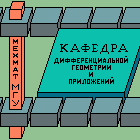|
Part 1. Persistent homology is a recent extension of the classical theory of homology in algebraic topology.
Assuming a filtered sequence of spaces, it quantifies the interval along which a homology class is alive.
This extension is critically important in applications of homology to shapes that arise in nature, including
delicate shapes like root systems of agricultural plants.
Part 2. Root systems are instrumental for the survival of plants, but we know little about the genetic control.
I report about a broad effort to develop a detailed phenotypical characterization of root systems of maize,
sorghum, and rice, including an imaging apparatus, the automatic reconstruction of the 3D root systems from
2D images, and the analysis of their intrinsic and extrinsic topology. (Joint work with the Benfey, Kochian,
Lynch, and Weitz labs.)
Part 3. The analysis is done on a 3D image representing a root, or a series of such images representing a
growing root. In order to enjoy a digital version of the Jordan Curve Theorem, it is common to use the closed
topology for the foreground and the open topology for the background of a 2-dimensional binary image. We
introduce a single topology that enjoys this theorem for all thresholds decomposing a real-valued image
into foreground and background. This topology is easy to construct and it generalizes to three and
higher-dimensional images. (Joint work with Olga Symonova.)
|

